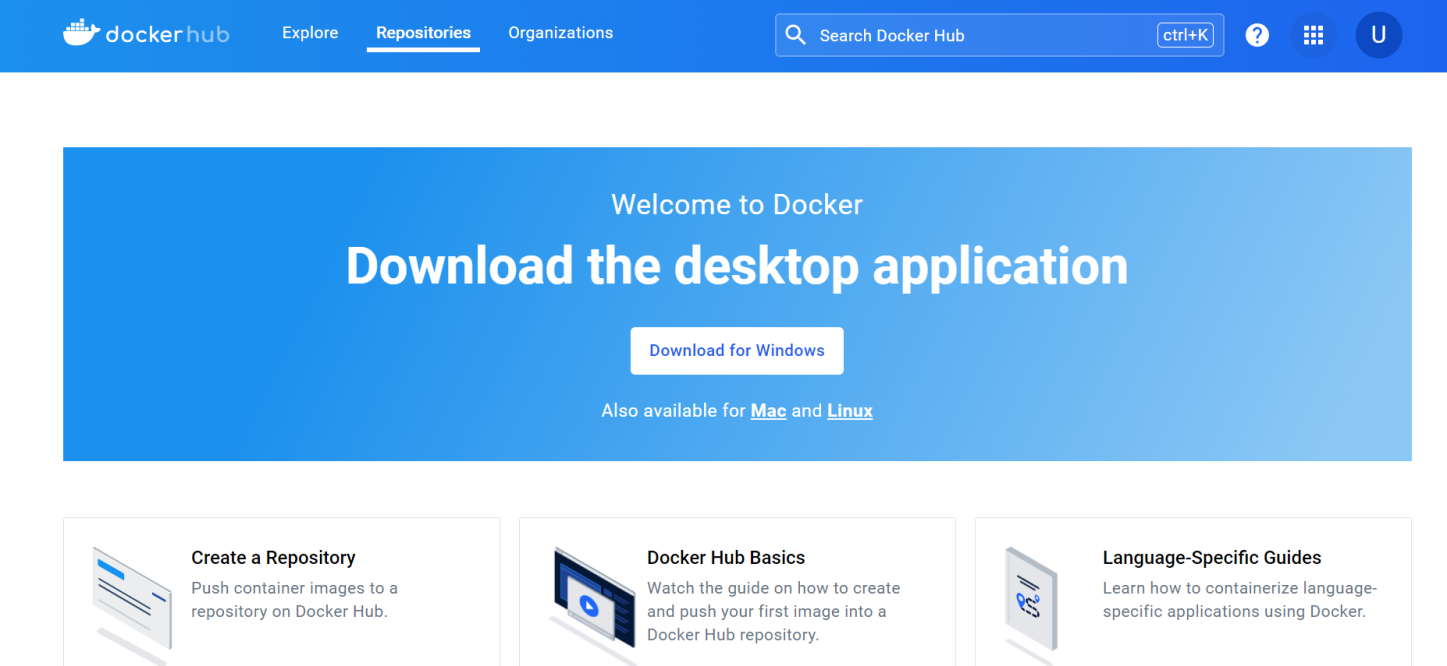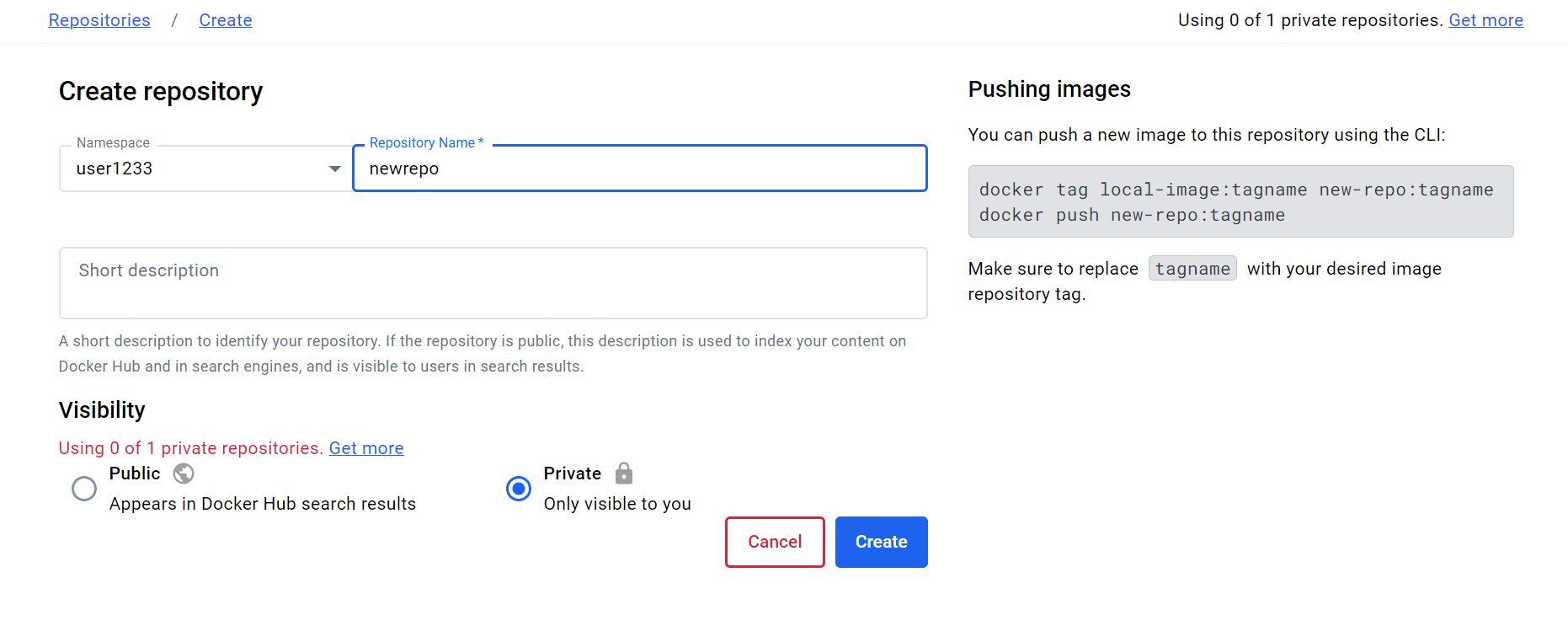Working professionals
Fresh graduates
- Study abroad
- Offline centres
More
5. Docker Hub
7. Docker Swarm
9. Docker Image
10. Docker Registry
11. Podman vs Docker
Mastering Docker Hub: A Comprehensive Overview
Introduction
Docker Hub stands as a central platform for container image discovery, distribution, and collaboration. Docker is very essential to the Docker ecosystem. Because it is a repository for official and user-generated Docker Hub images and a provider of various features to streamline container deployment and management.
Overview
Docker Hub serves as a cloud-based registry service to streamline the management and distribution of container images. Docker Hub makes it easier to build, share, and implement different types of apps with the help of Docker containers, which facilitates collaboration and sharing of containerized applications between developers and organizations.
What is Docker Hub?
You can think of Docker Hub as a cloud-based repository for Docker images, using which users can store, manage, and share container images. It offers a centralized system to access a wealth of pre-built images, enabling developers to leverage existing solutions and collaborate on containerized applications.
Key Features of the Docker Hub
Docker Hub offers a range of features, including:
- Public and Private Repositories: Docker Hub allows users to create public repositories, which are accessible to all, and private repositories, which provide controlled access to selected individuals or teams. This feature enables organizations to securely manage their proprietary images and share them within their trusted circles.
- Docker Trusted Content: Docker Hub's essential feature that guarantees the security and legitimacy of container images is Docker Trusted Content. It uses digital signatures to confirm the image's publisher and the authenticity of its origin. It ensures that it has not been altered since it was taken.
- Community and Collaboration: Developers, organizations, and open-source projects can work together, exchange best practices, and add to the body of knowledge on Docker Hub, which is a thriving community platform. In addition to receiving feedback and participating in knowledge exchange, users can peruse a sizable image repository.
How to Get Started with Docker Hub
How to get started with Docker Hub is explained below in detail:
Creating an Account
- Visit the Docker Hub Website: Go to the Docker Hub website at https://hub.docker.com/.
- Sign Up: Click on the "Sign Up" button, which is usually located at the top right of the webpage.
- Enter Details: Fill in the required fields, including your Docker ID, Email, and Password. Docker ID is a unique identifier for your account, similar to a username.
- Agree to Terms: Review Docker's privacy policy and terms of service. If you agree, then check the box to accept them.
- Verification: Go to "Sign Up" page and create your account. Check your email (including spam/junk folder) to see a verification message from Docker Hub. Click on the link provided with the email to verify your account.
- Sign In: After verifying your email address, return to Docker Hub and sign in using your Docker ID and the password you created.
Publishing Your First Image
- After signing in, users can click on the Create Repository button to start creating a new repository.

- Select your namespace and enter the repository name.

- Set the visibility of the repository.
- Click on Create button to Create it.
- Now, you have successfully created your first repository.
Docker Trusted Content
A security feature that offers image signing and verification to guarantee the integrity and authenticity of container images is called Docker Content Trust (DCT), also known as Docker Trusted Content. DCT enables users to verify the publisher of an image and confirm that the image has not been tampered with since it was signed. Here's a detailed explanation of the Docker Content Trust:
Image Signing
- Publisher Signature: When an image is pushed to a registry with DCT enabled, the publisher signs the image using their private key. Cryptographic evidence of the image's provenance and legitimacy is provided by this signature.
Image Verification
- Client-Side Verification: When pulling an image, the Docker client verifies the image signature against the publisher's public key. Through this procedure, the authenticity of the image is verified, and it is made sure that it has not been altered since it was signed.
Security Assurance
- Protection Against Tampering: DCT safeguards against unauthorized modifications to images, ensuring that the image retrieved from the registry is identical to the one that was signed and published by the trusted entity.
- Trust in the Software Supply Chain: By verifying the integrity of images and confirming the identity of their publishers, DCT enhances trust in the software supply chain, mitigating the risk of using compromised or unauthenticated container images.
Understanding Docker Hub Usage
To properly use Docker Hub for distribution, collaboration, and container image management, one must have a solid understanding of how to use it. Docker Hub acts as a centralized storage for Docker images in addition to offering a multitude of features and functionalities to accelerate the containerization workflow. When comprehending how to use Docker Hub, keep the following points in mind:
Repository Management
- Pulling Images: Docker Hub allows users to pull Docker images from the repository to their local environment. This gives developers access to a large library of pre-built images for different services and applications.
- Pushing Images: Users can push their Docker images to Docker Hub, making them available for deployment and sharing with others. The distribution of specially created container images is made easier by this feature.
Public and Private Repositories
- Public Repositories: Docker Hub supports the creation of public repositories, allowing users to share their Docker images with the broader community. Public repositories are accessible to all users, promoting open collaboration and knowledge sharing.
- Private Repositories: Users can create private repositories on Docker Hub to manage and share proprietary images within a controlled environment. This feature is valuable for organizations and teams requiring secure and restricted access to their container images.
Usage Monitoring and Insights
- Image Analytics: Docker Hub provides insights into image usage, including pull counts and popularity metrics. This allows users to monitor the adoption and usage of their published images and assess their impact within the Docker community.
- Usage Reports: Users can generate usage reports to track image downloads, repository activity, and other relevant metrics. This feature provides visibility into the performance and reach of published Docker images.
Benefits of Using Docker Hub
Some of the key benefits include:
- Access to Official Images: Docker Hub provides access to a vast repository of official images maintained by Docker and verified publishers. This makes it easier for reputable and trustworthy containerized services and applications to be deployed smoothly.
- Community Engagement: Developers can participate in open-source projects, exchange best practices, and get comments on their container images by using Docker Hub, which promotes community collaboration. This collaborative environment promotes knowledge exchange and collective improvement.
- Integration with CI/CD Pipelines: Docker Hub merges perfectly with continuous integration and delivery (CI/CD) pipelines through webhooks, enabling the automated deployment of container images as part of efficient software development workflows.
- Usage Reports: Users can generate usage reports to track image downloads, repository activity, and other relevant metrics, providing visibility into the performance and reach of published Docker images.
Final Thoughts
Docker Hub is a fundamental platform for finding, sharing, and working together with container images. The adoption and success of containerization technologies are greatly aided by Docker Hub, which offers a centralized repository for Docker images, encourages community involvement, and guarantees the security and legitimacy of container content.
FAQs
1. What is the purpose of the Docker Hub?
To create, test, and distribute Docker container images, you can link code repositories, build details, and test tools using Docker Hub, a cloud-based registry service.
2. What is the size limit for Docker Hub?
The size limit for a single Docker image pushed to Docker Hub is 10 GB.
3. What is the Docker Hub used to store?
Docker Hub is used to store Docker images, which can be publicly or privately hosted, based on the user's preference.
4. Can we push the container to the Docker Hub?
Yes, Docker containers can be packaged as images and pushed to Docker Hub for storage and distribution.
5. Is Docker Hub open-source?
While Docker Hub hosts many open-source projects, the platform itself is not open-source.
6. Can I use Docker Hub for free?
Yes, Docker Hub offers a free tier that allows you to store a limited number of public and private repositories.
7. Can Docker Hub be private?
Yes, Docker Hub allows for private repositories, which are only accessible to the user and any collaborators they authorize.
8. How safe is Docker Hub?
Docker Hub implements security features like image scanning and automated vulnerability detection; however, it is the user's responsibility to manage access controls and use secure images.
9. Does Docker Hub scan images?
Yes, Docker Hub can scan images for known vulnerabilities, but this feature is available only with a paid subscription.
Author|0


upGrad Learner Support
Talk to our experts. We are available 7 days a week, 10 AM to 7 PM
Indian Nationals
Foreign Nationals
Disclaimer
The above statistics depend on various factors and individual results may vary. Past performance is no guarantee of future results.
The student assumes full responsibility for all expenses associated with visas, travel, & related costs. upGrad does not .






















-7f4b4f34e09d42bfa73b58f4a230cffa.webp&w=128&q=75)
-ae8d039bbd2a41318308f8d26b52ac8f.svg)



